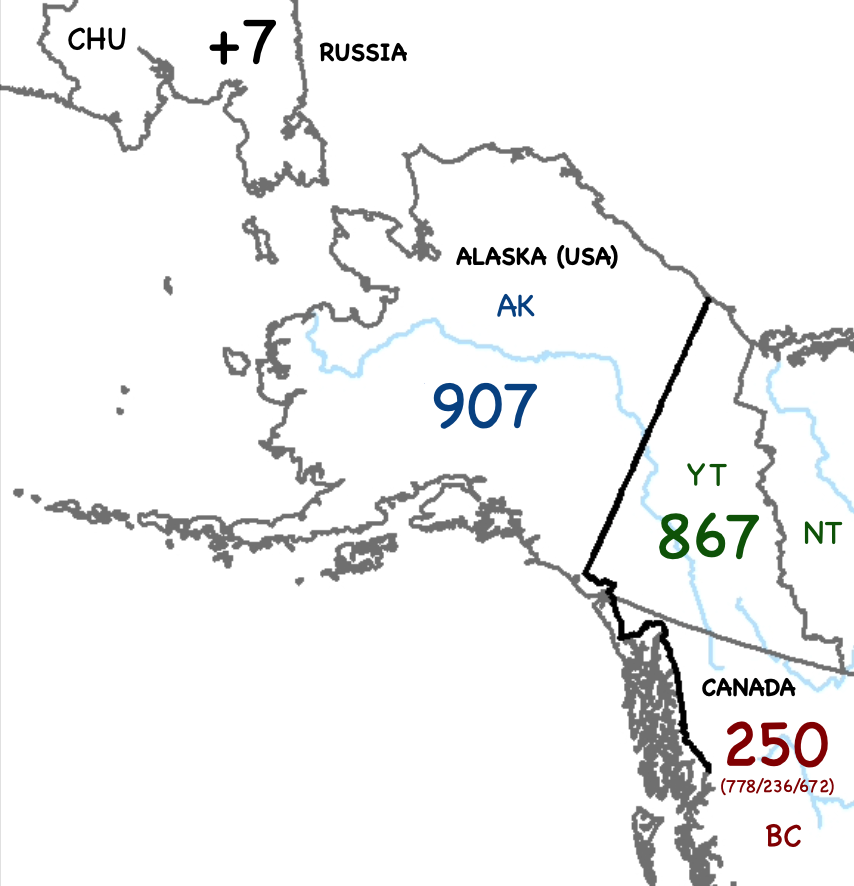|
Red Devil, Alaska
Red Devil is a census-designated place (CDP) in Bethel Census Area, Alaska, United States. The population was 23 at the 2010 census, down from 48 in 2000. Their post office was founded in 1957. History The village was named after the Red Devil Mine, established in 1921 by Hans Halverson when numerous mercury (quicksilver) deposits were discovered in the surrounding Kilbuck-Kuskokwim Mountains. By 1933, the mine was producing substantial quantities of mercury. Although the mine changed ownership twice over the years, it continued to operate until 1971. Geography According to the United States Census Bureau The United States Census Bureau (USCB), officially the Bureau of the Census, is a principal agency of the U.S. Federal Statistical System, responsible for producing data about the American people and economy An economy is an area of th ..., the CDP has a total area of , of which, of it is land and of it (8.34%) is water. Demographics Red Devil first appeared o ... [...More Info...] [...Related Items...] OR: [Wikipedia] [Google] [Baidu] |
Census-designated Place
A census-designated place (CDP) is a concentration of population defined by the United States Census Bureau for statistical purposes only. CDPs have been used in each decennial census since 1980 as the counterparts of incorporated places, such as self-governing cities, towns, and villages, for the purposes of gathering and correlating statistical data. CDPs are populated areas that generally include one officially designated but currently unincorporated community, for which the CDP is named, plus surrounding inhabited countryside of varying dimensions and, occasionally, other, smaller unincorporated communities as well. CDPs include small rural communities, edge cities, colonias located along the Mexico–United States border, and unincorporated resort and retirement communities and their environs. The boundaries of any CDP may change from decade to decade, and the Census Bureau may de-establish a CDP after a period of study, then re-establish it some decades later. Mo ... [...More Info...] [...Related Items...] OR: [Wikipedia] [Google] [Baidu] |
Red Devil Airport
Red Devil Airport is a public use airport located one nautical mile (1.85 km) northwest of the central business district of Red Devil, in Bethel Census Area of the U.S. state of Alaska. Facilities Red Devil Airport covers an area of at an elevation of 174 feet (53 m) above mean sea level. It has one runway designated 10/28 with a gravel surface measuring 4,801 by 75 feet (1,463 x 23 m). Airlines and destinations Accidents and incidents * On 24 March 1971, Douglas C-47B N49319 of Vanderpool Flying Service was damaged beyond economic repair in a landing accident. The aircraft was on an executive flight from Bethel Airport. References External links FAA Alaska airport diagram(GIF The Graphics Interchange Format (GIF; or , see pronunciation) is a bitmap image format that was developed by a team at the online services provider CompuServe led by American computer scientist Steve Wilhite and released on 15 June 1987. ...) Airports in the Bethel Census ... [...More Info...] [...Related Items...] OR: [Wikipedia] [Google] [Baidu] |
United States Census Bureau
The United States Census Bureau (USCB), officially the Bureau of the Census, is a principal agency of the U.S. Federal Statistical System, responsible for producing data about the American people and economy An economy is an area of the production, distribution and trade, as well as consumption of goods and services. In general, it is defined as a social domain that emphasize the practices, discourses, and material expressions associated with t .... The Census Bureau is part of the United States Department of Commerce, U.S. Department of Commerce and its Director of the United States Census Bureau, director is appointed by the President of the United States. The Census Bureau's primary mission is conducting the United States census, U.S. census every ten years, which allocates the seats of the U.S. House of Representatives to the U.S. state, states based on their population. The bureau's various censuses and surveys help allocate over $675 billion in federal funds e ... [...More Info...] [...Related Items...] OR: [Wikipedia] [Google] [Baidu] |
United States Census 2010
The United States census of 2010 was the twenty-third United States national census. National Census Day, the reference day used for the census, was April 1, 2010. The census was taken via mail-in citizen self-reporting, with enumerators serving to spot-check randomly selected neighborhoods and communities. As part of a drive to increase the count's accuracy, 635,000 temporary enumerators were hired. The population of the United States was counted as 308,745,538, a 9.7% increase from the 2000 census. This was the first census in which all states recorded a population of over half a million people as well as the first in which all 100 largest cities recorded populations of over 200,000. Introduction As required by the United States Constitution, the U.S. census has been conducted every 10 years since 1790. The 2000 U.S. census was the previous census completed. Participation in the U.S. census is required by law of persons living in the United States in Title 13 of the United ... [...More Info...] [...Related Items...] OR: [Wikipedia] [Google] [Baidu] |
Census-designated Place
A census-designated place (CDP) is a concentration of population defined by the United States Census Bureau for statistical purposes only. CDPs have been used in each decennial census since 1980 as the counterparts of incorporated places, such as self-governing cities, towns, and villages, for the purposes of gathering and correlating statistical data. CDPs are populated areas that generally include one officially designated but currently unincorporated community, for which the CDP is named, plus surrounding inhabited countryside of varying dimensions and, occasionally, other, smaller unincorporated communities as well. CDPs include small rural communities, edge cities, colonias located along the Mexico–United States border, and unincorporated resort and retirement communities and their environs. The boundaries of any CDP may change from decade to decade, and the Census Bureau may de-establish a CDP after a period of study, then re-establish it some decades later. Mo ... [...More Info...] [...Related Items...] OR: [Wikipedia] [Google] [Baidu] |
Geographic Names Information System
The Geographic Names Information System (GNIS) is a database of name and locative information about more than two million physical and cultural features throughout the United States and its territories, Antarctica, and the associated states of the Marshall Islands, Federated States of Micronesia, and Palau. It is a type of gazetteer. It was developed by the United States Geological Survey (USGS) in cooperation with the United States Board on Geographic Names (BGN) to promote the standardization of feature names. Data were collected in two phases. Although a third phase was considered, which would have handled name changes where local usages differed from maps, it was never begun. The database is part of a system that includes topographic map names and bibliographic references. The names of books and historic maps that confirm the feature or place name are cited. Variant names, alternatives to official federal names for a feature, are also recorded. Each feature receives ... [...More Info...] [...Related Items...] OR: [Wikipedia] [Google] [Baidu] |
Federal Information Processing Standard
The Federal Information Processing Standards (FIPS) of the United States are a set of publicly announced standards that the National Institute of Standards and Technology (NIST) has developed for use in computer systems of non-military, American government agencies and contractors. FIPS standards establish requirements for ensuring computer security and interoperability, and are intended for cases in which suitable industry standards do not already exist. Many FIPS specifications are modified versions of standards the technical communities use, such as the American National Standards Institute (ANSI), the Institute of Electrical and Electronics Engineers (IEEE), and the International Organization for Standardization (ISO). Specific areas of FIPS standardization The U.S. government has developed various FIPS specifications to standardize a number of topics including: * Codes, e.g., FIPS county codes or codes to indicate weather conditions or emergency indications. In 1994, N ... [...More Info...] [...Related Items...] OR: [Wikipedia] [Google] [Baidu] |
Area Code 907
Area code 907 is a telephone area code in the North American Numbering Plan (NANP) for the U.S. state of Alaska, except for the small southeastern community of Hyder, which uses area codes 236, 250, and 778 of neighboring Stewart, British Columbia. Despite having telephone service to the contiguous US via a terrestrial line via the town of Juneau since 1937,AT&T (1974) ''Events in Telephone History'' Alaska was not assigned an area code until after the Alaska submarine cable was opened for traffic in 1956. The Alaska numbering plan area (NPA) was assigned the area code 907 and entered service in 1957. The Alaska numbering plan area is geographically the largest of any in the United States. It is the second-largest in the NANP, and on the entire North American continent behind 867, which serves Canada's northern territories. Because the Aleutian Islands of Alaska cross longitude 180, the Anti-Meridian, 907 may be considered to be both the farthest west and the farthest east of ... [...More Info...] [...Related Items...] OR: [Wikipedia] [Google] [Baidu] |
Alaska Time Zone
The Alaska Time Zone observes standard time by subtracting nine hours from Coordinated Universal Time ( UTC−09:00). During daylight saving time its time offset is eight hours ( UTC−08:00). The clock time in this zone is based on mean solar time at the 135th meridian west of the Greenwich Observatory. The zone includes nearly all of the U.S. state of Alaska and is one hour behind the Pacific Time Zone. *standard time: Alaska Standard Time (AKST) *daylight saving time: Alaska Daylight Time (AKDT) The western Aleutian Islands observe Hawaii–Aleutian Time, one hour behind the remainder of the state. The largest city in the Alaskan Time Zone is Anchorage, Alaska. The Anchorage Metropolitan Area is the largest metropolitan area in the zone. Effective from 2007, the local time changes from AKST to AKDT at 02:00 LST to 03:00 LDT on the second Sunday in March and returns at 02:00 LDT to 01:00 LST on the first Sunday in November. History Two time zones have been referred to ... [...More Info...] [...Related Items...] OR: [Wikipedia] [Google] [Baidu] |
Alaska
Alaska ( ; russian: Аляска, Alyaska; ale, Alax̂sxax̂; ; ems, Alas'kaaq; Yup'ik: ''Alaskaq''; tli, Anáaski) is a state located in the Western United States on the northwest extremity of North America. A semi-exclave of the U.S., it borders the Canadian province of British Columbia and the Yukon territory to the east; it also shares a maritime border with the Russian Federation's Chukotka Autonomous Okrug to the west, just across the Bering Strait. To the north are the Chukchi and Beaufort Seas of the Arctic Ocean, while the Pacific Ocean lies to the south and southwest. Alaska is by far the largest U.S. state by area, comprising more total area than the next three largest states ( Texas, California, and Montana) combined. It represents the seventh-largest subnational division in the world. It is the third-least populous and the most sparsely populated state, but by far the continent's most populous territory located mostly north of the 60th paralle ... [...More Info...] [...Related Items...] OR: [Wikipedia] [Google] [Baidu] |


